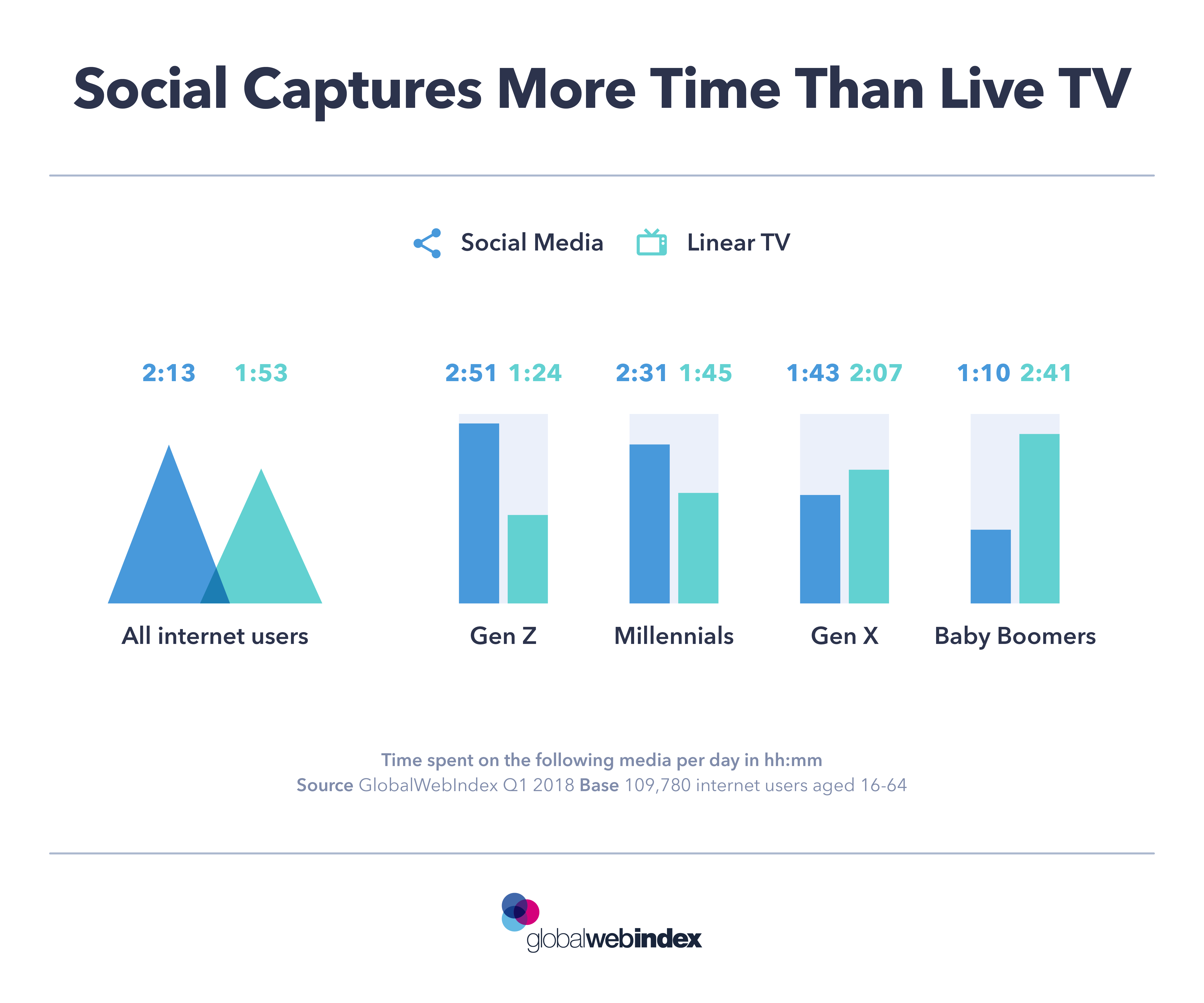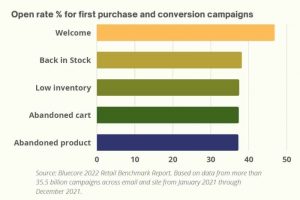— June 17, 2018
The last few months and years we’ve seen a few significant changes in the social landscape.
Think about this, when most of us started using social media, social networks were the place for updating statuses, sharing photos and keeping up with family and friends.
Today, there are videos to watch, news articles to read, podcasts to listen to and the opportunity to shop right from a video or Instagram post.
Today, we are spending around 20 minutes more per day on social media compared to TV and for Gen Zers, its almost 1 ½ hours more.

This shows that when embraced and managed effectively the advantage in reach with social media is rapidly closing the gap on television.
Social media is now directly competing with TV networks with the likes of Facebook, Instagram, Snapchat and Twitter
Social commerce is a significant revenue generator for apps such as WeChat in Asia, thus its no surprise that Facebook has been quick to encourage in-app impulse buying by facilitating payments on Messenger and ‘Shop Now’ buttons.
This leads to the question of how can brands embrace and engage with the rise of social commerce?
Social media is key for research
Today, a brand must have a social presence.
Social media and networks can drive a massive reach since just about anyone on the internet today is now a social networker. The role of social media has evolved from updating friends and family to now being an active part of the purchase journey.
A recent research study by Global Web Index demonstrated that 4 in 10 internet users ages 16-64 are turning to social media to research new brands or products.
In fact, 37% of internet users who turn to social networks to carry out research on brands or products – a marked increase on the 28% seen back in mid-2015.
Knowing that a younger demographic is leading this change, it will not be long before social overtakes search as the top portal for product research.
Today, 4 in 10 consumers follow their favorite brands on social media, and these numbers are increasing by the day.
Based on how consumers are engaging with brands on social media, brands should be marketing their products on these platforms.
Knowing where and when to communicate a brand message depends on the target audience, their needs, and where they are in the purchase funnel.
Considering that, 1 in 4 consumers have watched a consumer review on YouTube, while almost 4 in 10 have watched a tutorial in the last month, shows the shows the power of a brand YouTube product research, reviews, and education.
Today, brands are on offering the chance to complete a purchase directly through social media. Just today, Instagram announced that “Instagram Stories, you see a sticker with a shopping bag icon tap on it to see more details about that product.”
This allows for a seamless customer experience as brands can add “shop now” and “buy now” buttons for smooth transactions and the ability to act upon impulse purchases.
As a result of social media, the traditional purchase funnel has dramatically changed. It is now a ‘consumer decision journey’ that is a combination of the customer experience and brand advocacy.
It’s critical for brands to understand how the customer journey – or consumer buying process – has changed to influence consumers at the moments that matter.
Today consumers are more fragmented across social media platforms, channels, and devices than they’ve ever been.
Consumers have instant access to a depth of information today, at the touch of a button. As a result, consumers are considering a higher number of brands and products at the start of their journey than ever before.
This gives brands far more opportunities to compete with competitors, with a higher number of touchpoints to engage their target audience.
Touchpoints range from:
- Online and TV Advertising
- Chatbots
- Social Media
- Snapchat
- Smart packaging – allows consumers to tap the brand logo with their phone to unlock five digital experiences, including competitions, drinks recipes or a playlist.
- YouTube
- Online Influencers
- Video – 96% of Facebook users watch video clips on any device, and 99% of Instagram, Twitter and Snapchat users watch videos.
Knowing which drivers apply directly to your target market will ensure you’re using the right marketing tactics.
Research shows that the most critical factors impacting every stage of the purchase funnel and customer journey require a different approach for each for each demographic. For example:
- 71% of baby boomers think free delivery is essential.
- 59% of millennials will seek expert opinion before making a purchase.
- 47% of Gen Z turn to social media to research brands.
- 63% of Gen X stick to the brand they like.
- 71% of Gen Z discover brands through celebrity networkers.
A Baymard Institute survey, July 2017 showed that 61% of shoppers with abandon a shopping cart due to the extra costs for shipping, taxes, or other fees.
Understanding this gives brands an opportunity to rectify the problem and increase conversions at the optimal time. Asics, for example, reiterates the benefits of its free shipping policy in its cart abandonment email to drive conversions.
How to make social commerce work
That latest statistics show that buying online is a mobile-first activity – 57% of PC shoppers using mobiles to purchase items online. Therefore, your website needs to be mobile optimized and social media posts need to take this into consideration.
Instagram and Pinterest are photo-centric platforms that offer attractive options that allow brands to showcase a lifestyle and build their brand story.
IKEA embraced the inspiring nature of Instagram where it distributes inspirational content. This has resulted in an average order value increase of digital purchases by approximately 10%.
Instagram Stories, humanize brands and help forge a deeper connection with social audiences.
The New York Times Fashion section found the right balance covering the Ralph Lauren Fashion Show and showcasing the designer dresses that would be available for purchase. They also incorporated celebrity interviews and moments from the after-party using Instagram Stories.
You’re probably thinking, I have a boring product and work in a boring industry.
To you, it may be to the outsider it’s interesting. Do not be afraid to take a short video of behind the scenes, do quick employee interviews of what their job encompasses or what they like about the company.
The goal is to personalize your brand and make it relatable.
People buy from brands they relate to and trust. Putting the human touch on a product allows you to do this, regardless of the industry.
Maintain the balance between visual and written content
There’s a balance that needs to be maintained between effective content marketing and pushing for purchases.
Today, 4 in 10 digital consumers follow their favorite brands on social but does not mean that they are loyal followers. The worst thing a brand can do is overloading their social media feed with pictures of merchandise and buy buttons which will quickly turn followers off.
The real power of “shop now” and “buy buttons” emerge when brand messages reach shoppers who are interested in your brand and product.
The key is to maintain the balance between other non-sales type content to consumers who display a genuine interest and overloading with ‘sales’ content. This speeds up the consumer path to purchase with buy buttons is sure to appeal.
Make it Easy To Purchase
Today, 50% of the online population are now shopping on mobile devices, and inputting information on small screens can easily kill completing a purchase, increasing cart abandonment. This needs to be an integrated process which today is easily accomplished with the likes of Apple Pay and Google Pay.
We are still in the infancy of social commerce, however taking the time to understand how to interact with and bring value to your target audience will set your brand up for success.
This was original posted here.
Digital & Social Articles on Business 2 Community
(73)








